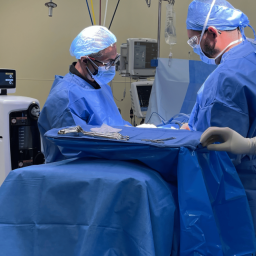
Soft tissue cancer is a general term for cancers that originate in the body’s connective tissues. These cancers include muscles, fat tissue, blood vessels, nerves, and other connective tissues. Soft tissue cancer is typically characterized by local growth of the affected tissues and metastasis to different parts of the body. Examples of soft tissue cancers include liposarcoma (fat tissue cancer), leiomyosarcoma (smooth muscle cancer), and rhabdomyosarcoma (skeletal muscle cancer).
Soft tissue cancer often begins in the muscles and connective tissue but can develop in other areas of the body as well. The type of cancer determines the rate of spread and how the tumor responds to treatment. In the early stages, soft tissue cancer usually presents with few symptoms, making diagnosis difficult. The cancer is typically noticed when a tumor grows locally, causing compression of surrounding tissues or affecting organs, leading to pain.
Surgical Treatment of Soft Tissue Cancer

Surgical intervention is the most common approach in the treatment of soft tissue cancer. Surgically removing the cancer is a critical step in eliminating the tumor and preventing the disease from spreading. However, the effectiveness of surgery depends on factors such as the type of cancer, tumor size, metastasis, and the patient’s overall health. Surgery may not always be sufficient by itself, and treatment is often combined with other therapies.
The Goal of Surgery
In soft tissue cancers, the primary goal of surgery is to remove the tumor as completely as possible. During the surgical procedure, some healthy tissue surrounding the cancerous area may also be removed to ensure complete excision of the tumor. This approach helps to reduce the risk of recurrence. The specific goals of surgery can vary depending on the tumor’s location, size, and type. In some cases, tumors are carefully removed to avoid damaging surrounding tissues.
When Surgery is Indicated
The decision to use surgery in the treatment of soft tissue cancer depends on the type and stage of the cancer. However, surgery is generally recommended in the following cases:

Early-Stage Cancer
When soft tissue cancer is detected at an early stage, surgical intervention may be sufficient as the primary treatment. In early-stage cancer, the tumor has not yet spread to surrounding tissues, and complete removal may be possible. Early diagnosis and treatment typically lead to better responses to treatment.
Recurrent Soft Tissue Cancer
Some soft tissue cancers may recur even after treatment. In such cases, surgical intervention is often necessary to remove areas where the cancer has grown or spread. The success rate of surgery in recurrent cancer depends on factors such as the initial response to treatment and the extent of cancer spread.
Metastatic Soft Tissue Cancer
Metastasis refers to the spread of cancer to other organs. In metastatic soft tissue cancer, surgery is usually performed to remove the metastatic tumors. However, the effectiveness of surgery in metastatic cases is evaluated in combination with other treatment methods.
Pain and Functional Issues Caused by Soft Tissue Cancer
Certain soft tissue cancers can compress nerves or muscles as they grow, leading to pain. In these cases, surgery may be performed to relieve pain and address functional problems. This type of surgery aims to improve the patient’s quality of life.
Challenges and Risks of Surgery

While surgery is a common and effective treatment option for soft tissue cancer, it comes with challenges and risks. Soft tissue cancers may sometimes affect vital structures, such as major blood vessels and nerves, which can complicate the surgical procedure. Additionally, the recovery process after surgery can take time, and some patients may require rehabilitation.
Potential Risks of Surgery:
- Infection: There is always a risk of infection during surgery. Infections can prolong recovery and affect the patient’s overall health.
- Bleeding: There is a risk of bleeding during soft tissue cancer surgery, particularly if the tumor is large or located near blood vessels.
- Functional Loss: Removing healthy tissues around the cancer may result in loss of function. For example, surgeries involving muscles and nerves can affect motor functions.
- Anesthesia Risks: The patient’s response to anesthesia is also a risk. Elderly patients or those with pre-existing health conditions may be more sensitive to anesthesia.
Post-Surgical Monitoring and Rehabilitation
After surgery, patients undergo a critical recovery process. Postoperative care aims to prevent infections, speed up wound healing, and support functional recovery. The recovery period depends on factors such as tumor size, the complexity of surgery, and the patient’s overall health.
Surgery plays a significant role in the treatment of soft tissue cancer, and the decision to perform surgical intervention depends on factors such as the stage of cancer, metastasis, and the patient’s overall health. Surgical intervention is typically effective in early-stage cancers, but in advanced cases, surgery is combined with other treatment methods for optimal results. Post-surgical monitoring and rehabilitation are also essential, as they help improve the patient’s compliance with treatment and enhance their quality of life.







